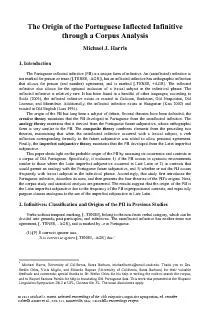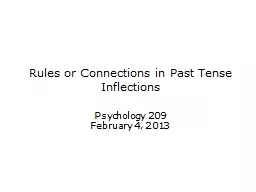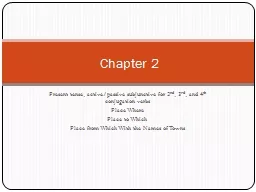PDF-)that allows for person (and number) agreement, and is marked [-TENSE,
Author : tatyana-admore | Published Date : 2015-08-15
lifornia Santa Barbara michaelharrisumailucsbedu Thank you to Drs In contrast to most other languages worldwide an AGR infinitive is allowed in Portuguese The inflected
Presentation Embed Code
Download Presentation
Download Presentation The PPT/PDF document ")that allows for person (and number) agr..." is the property of its rightful owner. Permission is granted to download and print the materials on this website for personal, non-commercial use only, and to display it on your personal computer provided you do not modify the materials and that you retain all copyright notices contained in the materials. By downloading content from our website, you accept the terms of this agreement.
)that allows for person (and number) agreement, and is marked [-TENSE,: Transcript
Download Rules Of Document
")that allows for person (and number) agreement, and is marked [-TENSE,"The content belongs to its owner. You may download and print it for personal use, without modification, and keep all copyright notices. By downloading, you agree to these terms.
Related Documents














